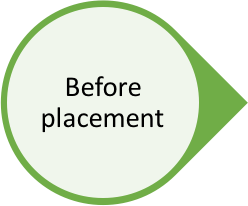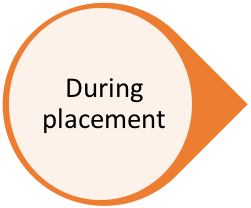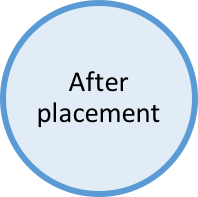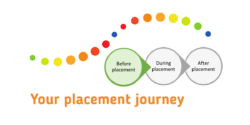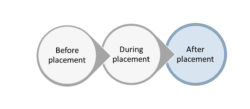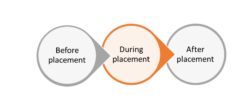Authors: Dr Sarah Jayne Hitt (NMITE); Dr Matthew Studley (University of the West of England, Bristol); Dr Darian Meacham (Maastricht University); Dr Nik Whitehead (University of Wales Trinity Saint David); Professor Mike Bramhall (TEDI-London); Isobel Grimley (Engineering Professors’ Council).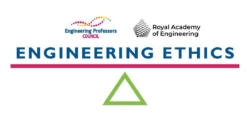
Topic: Safety of construction materials.
Engineering disciplines: Mechanical, Materials.
Ethical issues: Safety, Communication, Whistleblowing, Power.
Educational level: Beginner.
Educational aim: To develop ethical awareness. Ethical awareness is when an individual determines that a single situation has moral implications and can be considered from an ethical point of view.
Learning and teaching notes:
This case concerns a construction engineer navigating multiple demands. The engineer must evaluate trade-offs between technical specifications, historical preservation, financial limitations, social needs, and safety. Some of these issues have obvious ethical dimensions, while others are ethically more ambiguous. In addition, the engineer must navigate a professional scenario in which different stakeholders try to influence the resolution of the dilemma.
This case study addresses two of AHEP 4’s themes: The Engineer and Society (acknowledging that engineering activity can have a significant societal impact) and Engineering Practice (the practical application of engineering concepts, tools and professional skills). To map this case study to the AHEP outcomes specific to a programme under these themes, access AHEP4 here and navigate to pages 30-31 and 35-37.
The dilemma in this case is presented in two parts. If desired, a teacher can use Part one in isolation, but Part two develops and complicates the concepts presented in Part one to provide for additional learning. The case allows teachers the option to stop at multiple points for questions and / or activities as desired.
Learners have the opportunity to:
- determine if an engineering situation has ethical dimensions and identify what these are;
- identify where tensions might arise between professionals;
- practise stakeholder mapping;
- debate possible solutions to an ethical dilemma.
Teachers have the opportunity to:
- highlight professional codes of ethics and their relevance to engineering situations;
- address approaches to resolve interpersonal and / or professional conflict;
- integrate technical content on glass – such as strength, failure, and manufacture;
- integrate construction industry codes and / or specifications;
- informally evaluate students’ critical thinking and communication skills.
Learning and teaching resources:
- RAEng/Engineering Council Statement of Ethical Principles
- Society of Construction Law: Statement of Ethical Principles
- Glass safety: Technical information
- Fire rated glass in heritage buildings
- Stakeholder matrix for ethical relationships in the construction industry (SERM)
- Mapping actors and processes
Summary:
Krystyna is a construction engineer working as part of a team that is retrofitting a Victorian-era factory into multi-unit housing. As an amateur history buff, she is excited to be working on a listed building for the first time in her career after finishing university three years ago. However, this poses additional challenges: she must write the specification for glass windows that will maintain the building’s heritage status but also conform to 21st century safety standards and requirements for energy efficiency. In addition, Krystyna feels under pressure because Sir Robert, the developer of the property, is keen to maximise profits while maintaining the historic feel valued by potential buyers. He also wants to get the property on the housing market as soon as possible to help mitigate a housing shortage in the area. This is the first of many properties that Dave, the project’s contractor who is well-regarded locally and has 30 years of experience working in the community, will be building for Sir Robert. This is the first time that Krystyna has worked with Dave.
Optional STOP for questions and activities:
1. Discussion: What competing values or motivations might conflict in this scenario?
2. Discussion: What codes, standards and authority bodies might be relevant to this scenario?
3. Activity: Assemble a bibliography of relevant professional codes, standards, and authorities.
4. Activity: Undertake a technical project relating to testing glass for fire safety and / or energy efficiency.
5. Activity: Research the use of glass as a building material throughout history and / or engineering innovations in glass production.
Dilemma – Part one:
On her first walk through the property with Dave, Krystyna discovers that the factory building has large floor-to-ceiling windows on the upper stories. Dave tells her that these windows were replaced at some point in the past 50 years before the building was listed, at a time when it wasn’t used or occupied, although the records are vague. The glass is in excellent condition and Sir Robert has not budgeted either the time or the expense to replace glass in the heritage building.
While writing the specification, Krystyna discovers that the standards for fire protection as well as impact safety and environmental control have changed since the glass was most likely installed. After this research, she emails Dave and outlines what she considers to be the safest and most responsible form of mitigation: to fully replace all the large windows with glass produced by a supplier with experience in fire-rated safety glass for heritage buildings. To justify this cost, she highlights the potential dangers to human health and the environment of not replacing the glass.
Dave replies with a reassuring tone and refers to his extensive experience as a contractor. He feels that too many additional costs would be incurred such as finding qualified installers, writing up new architectural plans, or stopping work altogether due to planning permissions related to historic properties. He argues that there is a low probability of a problem actually arising with the glass. Dave encourages Krystyna not to reveal these findings to Sir Robert so that “future conflicts can be avoided.”
Optional STOP for questions and activities:
1. Discussion: What ethical issues that can be identified in this scenario?
2. Discussion: What interpersonal dynamics might affect the way this situation can be resolved?
3. Discussion: If you were the engineer, what action would you take, if any?
4. Activity: Identify all potential stakeholders and their values, motivations, and responsibilities using the SERM found in the Learning and teaching resources section.
5. Activity: Role-play the engineer’s response to the contractor or conversation with the developer.
6. Discussion: How do the RAEng/Engineering Council Statement of Ethical Principles and the Society of Construction Law Statement of Ethical Principles inform what ethical issues may be present, and what solutions might be possible?
Dilemma – Part two:
After considerable back and forth with Dave, Krystyna sees that she is unlikely to persuade him to make the changes to the project that she has recommended. Now she must decide whether to go against his advice and notify Sir Robert that they have disagreed about the best solution. Additionally, Krystyna has begun to wonder whether she has a responsibility to future residents of the building who will be unaware of any potential dangers related to the windows. Meanwhile, time is moving on and there are other deadlines related to the project that she must turn her focus to and complete.
Optional STOP for questions and activities:
The Society of Construction Law’s Statement of Ethical Principles advises “provid[ing] information and warning of matters . . . which are of potential detriment to others who may be adversely affected by them.”
1. Activity: Debate whether or not Krystyna has an ethical or professional responsibility to warn relevant parties.
2. Discussion: If Krystyna simply warns them, is her ethical responsibility fulfilled?
3. Activity: Map the value conflicts and trade-offs Krystyna is dealing with. Use the Mapping Actors and Processes article in the Learning and teaching resources section.
4. Discussion: If you were Krystyna, what would you do and why?
5. Discussion: In what ways are the professional codes helpful (or not) in resolving this dilemma?
6. Discussion: ’Advises’ or ‘requires’? What’s the difference between these two words in their use within a code of ethics? Could an engineer’s response to a situation based on these codes of ethics be different depending on which of these words is used?
Enhancements:
An enhancement for this case study can be found here.
This work is licensed under a Creative Commons Attribution-ShareAlike 4.0 International License.
Any views, thoughts, and opinions expressed herein are solely that of the author(s) and do not necessarily reflect the views, opinions, policies, or position of the Engineering Professors’ Council or the Toolkit sponsors and supporters.
